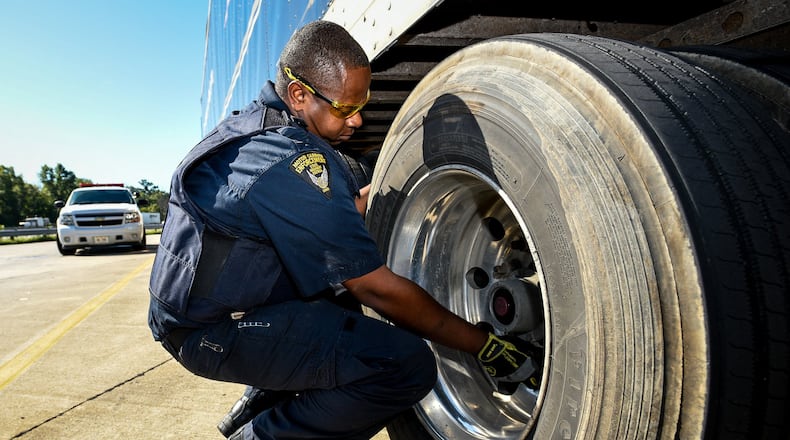Called “Roadcheck,” the inspections focus ”on specific areas of operations to ensure that motor carriers are operating safely on the highways,” said John Williams, a member of the Public Utilities Commission of Ohio (PUCO), which will participate in the inspections.
All inspectors, either PUCO staff, Ohio State Highway Patrol troopers or civilians, are in marked vehicles, said Keith Kerns, assistant chief in the PUCO’s Motor Carrier Enforcement Division. They may pull trucks over on the road or they may be present at fixed sites, such as waystations, weight scales or rest areas off interstates.
Truck traffic has grown in Ohio in recent years, Kerns said in an interview Tuesday. “Ohio is definitely a crossroads for truck traffic. We have a large volume of traffic through the state, probably one of the largest in the country because of all the intersecting interstates.”
Inspectors will conduct a North American Standard Level I Inspection, a 37-step examination of driver requirements and vehicle fitness.
But this year’s event will also emphasize compliance with hours-of-service regulations and tire maintenance.
“Obviously, with hours of service, we’re always looking to make sure fatigue is not an issue,” he said. “We look at their ELDs or electronic logging devices. We look for accuracy.”
For most drivers, hours-of-service logs are digital. They upload electronic records to the PUCO. Inspectors always are on the lookout for abuse and falsification of records, he said.
Drivers can sometimes be tempted to extend work days even for a few minutes, Kerns said.
“But those few minutes over a week’s worth of time can add up,” he said.
“These regulations help to prevent crashes and incidents caused by fatigue,” the PUCO said in a statement. “Drivers must accurately log their times and duty statuses. Drivers failing to properly retain or found to be falsifying logs will be subject to civil forfeiture and may be placed out-of-service.”
Tires are fundamental, as well. It is far more expensive and time-consuming for motor carriers to deal with an in-transit tire failure versus maintaining tires and addressing tire issues before a vehicle is on the road.
About the Author

